March 2022
- English
- 日本語
The Creation of Fascinating Model Figures
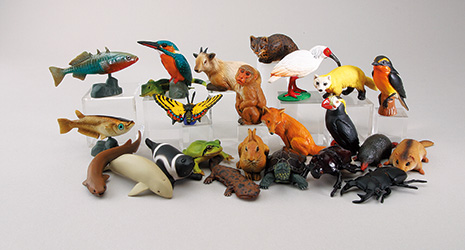
Model figures from the Japanese animal series created by Kaiyodo 
Model figure of Hokusai’s “The Great Wave off Kanagawa” woodblock print
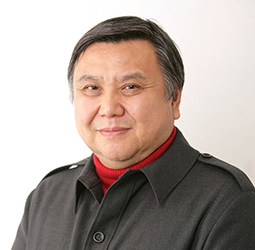
Miyawaki Shuichi, managing director of Kaiyodo Co., Ltd. 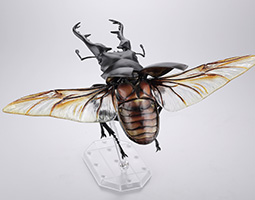
A model figure of a giraffe stag beetle with wings extended 
A model figure of a Japanese golden eagle in flight 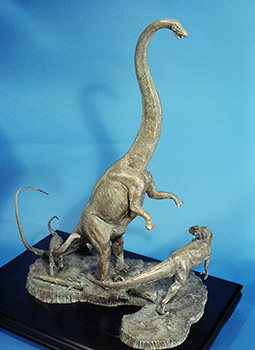
“Allosaurus vs. Barosaurus,” created by request for the American Museum of Natural History 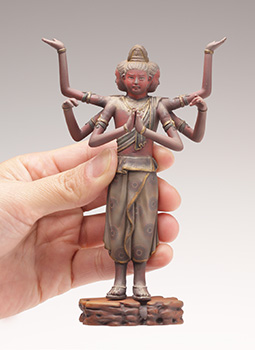
A model figure of a statue of Asura, a National Treasure of Japan

Children are not the only ones to be fascinated by the small plastic dolls known as “model figures.” There are more than a few adults who enjoy placing elaborate model figures of anime characters, animals, Buddhist statues, and more on their desk or shelf. Let’s look at these model figures loved across generations and the company that pioneered the industry.

In the 1980s, model figures began appearing on the market that were uniquely shaped, realistic, beautiful and full of energy, and they captured the attention of people around the world. The company that created these model figures was Kaiyodo Co., Ltd. in Kadoma City, Osaka. Since then, Kaiyodo has produced elaborate model figures of all kinds of things, from a series of Japanese animals to monsters, dinosaurs, anime and video game characters, and even Buddhist statues. Fans and collectors of these model figures are not just in Japan, but are spread out across the United States, China and beyond. The model figures have received high praise, have been used as production materials for internationally famous dinosaur movies, and Kaiyodo was even asked by the American Museum of Natural History, the largest natural history museum in the world, to create model figures to be used as exhibit pieces.

Kaiyodo was founded in 1964 when Miyawaki Osamu renovated a small rental library and opened a model shop there. The company began working on original 3D models of monsters and animation characters, called “garage kits,” in 1980.
Managing Director Miyawaki Shuichi (Osamu’s son) loved plastic models and became the head of the store in his second year of junior high school. He became a manager in around 1977 just after turning 20. He stresses that “in order to create truly good and wonderful products, have many customers acquire these products, and find joy in the products, Kaiyodo has stuck to its goal of being a group of molding masters and creators.” Regular customers who were creating elaborate 3D models with surprising skill and expert knowledge sympathized with this attitude and began to be drawn in. Kaiyodo then began its journey as a model figure manufacturer by taking molds of these models and selling them on a large scale.

Director Shuichi values his staff’s creativity by calling those who make model figures “molding masters.” He calls the process of making products “creation” rather than “production,” and these molding masters have worked with pride and dedication to create model figures unlike those of other companies. The molding master’s name is always etched into the product he or she created. The model figures are not only exquisite, but they are also a grand testament to the individuality of each model creator. Fans from around the world are fascinated by these model figures that are not simply toys or dolls, but “works of figurative art.”

The Japanese animal series which Kaiyodo created in 1999 became a huge hit, with 3–4 cm model figures of bugs, small forest and aquatic animals, and marine creatures sold inside egg-shaped chocolate treats, and in three years, they had sold 150 million. Rather than children, the people who sought these out were adults who were fascinated with model figures. This series also created a boom in capsule toys, with model figures placed inside clear capsules small enough to rest on the palm.

While there is a sense that model figures are typically Japanese anime characters or animals, lately model figures of Japanese arts and crafts such as Buddhist statues and Hokusai’s woodblock prints, Snoopy and his friends from the American Peanuts comics, and miniatures of works by Swedish ceramic artist Lisa Larson are also popular, and collectors themselves are also becoming more diverse.

The model figures from this organization of molding masters are filled with a desire to have customers love truly fine model figures in the way people love dolls and to let those feelings grow.

